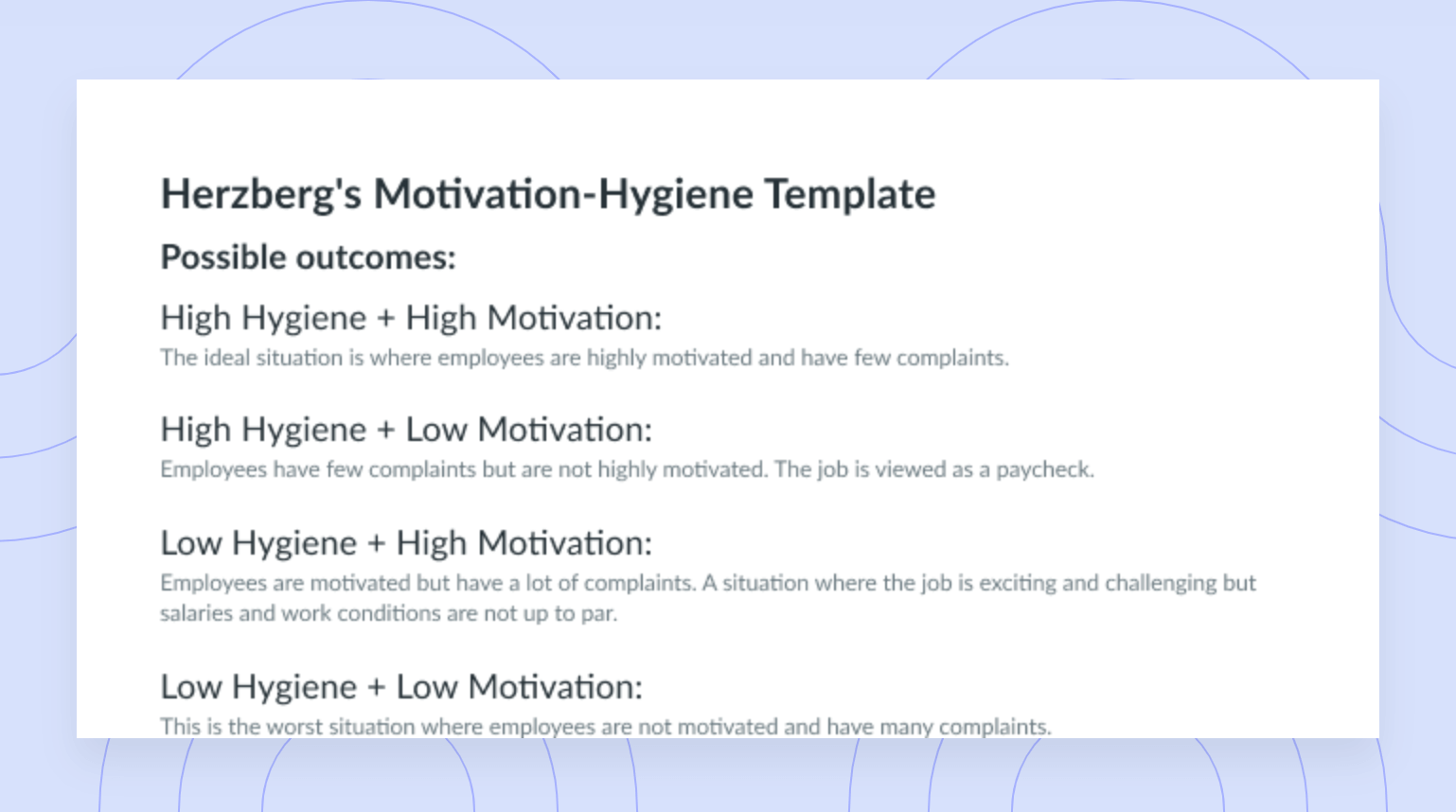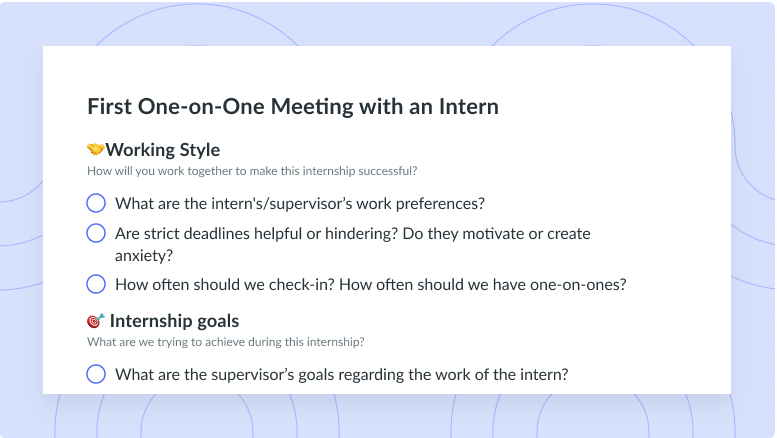Everything You Need to Know About Macromanagement
Macromanagment comes with its pros and cons. Discover how this management style can help you and how to use it to avoid its downfalls.
We’ve all heard of micromanagers, also known as helicopter managers. These are the managers who constantly give feedback on their team members’ work every step of the way or, even worse, take over entirely. This management style can feel overbearing, like they’re breathing down their team members’ necks, which causes undue stress and impacts performance as a result.
On the contrary, macromanagers take the opposite approach and distance themselves from their employee’s work. Macromanagers foster a very laid-back, independent environment and focus on the larger goal at hand rather than their employees’ daily work.
But don’t get ahead of yourself thinking that macromanagment is the way to go because, with everything, there are pros and cons. So, keep reading to discover the benefits and disadvantages of macromanagment.
- What is macromanagement?
- Benefits of macromanagement
- Disadvantages of macromanagement
- Macromanagement versus micromanagement
What is macromanagement?
Macromanagement is a management style that is most effective with highly skilled employees. Because macromanagers separate themselves from their employees’ work, it’s best that the employees don’t require direction or support. Additionally, successful macromanagment occurs when managers trust their employees since these managers aren’t overseeing all of their team’s work.

Offer guidance
Holding regular one-on-one meetings with your team can be a great way to create space for conversation while still providing autonomy. Try a tool like Fellow for delightful 1:1’s!

Benefits of macromanagement
- Employees have more autonomy
- Trust levels are higher
- Work environment is more relaxed
- Creative thinking is improved
- Opportunities for cross-collaboration
- Teams can develop their skills
- Intrinsic motivation is ignited
1 Employees have more autonomy
Macromanagement gives employees more autonomy since managers step back and allow their employees to complete their work independently. Rather than providing feedback and direction every step of the way, macromanagers give their employees the freedom and space to work at their own pace.
Additionally, according to Holger Reisinger and Dane Fetterer, Harvard Business Review contributors, “autonomy is an indispensable component of motivation and a key driver of performance and well-being.” Thus, by giving employees more autonomy, they will be more motivated, which will result in higher performance and increased overall well-being.
2 Trust levels are higher
The key to successful macromanagement is trust. If managers can’t trust their employees, they can’t completely distance themselves from their employees’ work. Similarly, if managers can’t trust their employees to hold themselves accountable for completing their work, macromanagement won’t work.
Here are 7 tips for building trust:
- Get to know your teammates
- Lead with trust
- Hold regular one-on-one meetings
- Create opportunities for social interaction
- Keep your words and actions consistent
- Admit when you make a mistake
- Ask for feedback frequently
3 Work environment is more relaxed
“When employees are put in a high-stress situation — whether from unclear expectations, unreasonable deadlines, or a hectic workspace — […] the primal, more emotional, parts of our brains take over, and our ability to think long term, strategize and innovate decreases,” says Natalia Peart, CEO of the Catalyst Innovation Group. However, macromanagement creates a more relaxed work environment, which in turn mitigates workplace stress.
Additionally, employees are happier in a more relaxed work environment because they have the freedom to do their work at their own pace without someone breathing down their neck. This freedom even results in better retention rates for companies.
4 Creative thinking is improved
Macromanagement improves employees’ creativity by allowing them to work how they want, and not how they’re being told to work. For example, Jane may benefit from longer workdays with more breaks, whereas John may benefit from shorter workdays and fewer breaks. Both Jane and John complete their work on time, but macromanagement allows them to explore these different approaches.
5 Opportunities for cross-collaboration
Opportunities for cross-collaboration can result from a macromanagement approach, because rather than relying on their direct reports for guidance, employees can rely on each other for help. This collaboration also helps build employee relationships, fostering a positive work environment. Additionally, with this approach, direct reports have the opportunity to rely on their team members for help and collaboration. It’s a win-win situation!
6 Teams can develop their skills
Because macromanagement allows employees to work on what they want, the way they want, employees have the opportunity to grow their professional skills. For example, rather than having their manager dictate their every move, employees are given the freedom to develop their own skills to complete their work.
Additionally, macromanagement helps teams build their skills by fostering collaboration. When a team collaborates, team members learn from each other to develop new skills.
7 Intrinsic motivation is ignited
According to David J. Smith, career coach and NGO president, intrinsic motivation is “the desire to engage in some activity for the satisfaction one gets out of the experience.” For example, rather than working for monetary compensation, intrinsically motivated employees are motivated by the feeling of accomplishment. Thus, macromanagement ignites intrinsic motivation by encouraging employees to complete work independently.
Additionally, many high-performing workers are intrinsically motivated when given independence and autonomy, because this freedom is an opportunity to grow their skills through professional development. Employees who have the opportunity to do work that interests them may become more intrinsically motivated.
Disadvantages of macromanagement
Now that we’ve looked at the advantages of macromanagement, let’s take some time to explore the drawbacks of this management style.
1 Gaps in communication
Rather than being right there to provide assistance and support, macromanagers distance themselves from their employees, which can result in a communication gap. While micromanagers who constantly give feedback can be frustrating and tiresome, receiving no feedback can leave employees feeling in the dark about their work.
The solution to this gap is for macromanagers to clearly communicate their expectations and directions. This will make it less likely that employees will feel lost in regards to how they’re performing. It’s also important that macromanagers communicate to their employees that even though they’re distant, they’re still available to assist their employees when needed.
2 Drops in productivity
For employees who can’t hold themselves accountable, macromanagement may cause drops in their productivity. If there isn’t someone telling them to do their work, checking up on them, or giving them feedback along the way, their productivity may suffer.
However, a solution to this productivity drop is for managers to build trust with their team, make sure their team knows that they’re doing what is needed, and have regular check-ins. Check-ins are quick 10-15 minute conversations that managers can have with their employees to get updated on their daily work. These conversations help ensure that managers keep their distance while still fostering accountability within their team.
3 Problem-solving is slower
When one person is working to solve a problem, it will likely take longer than if there was a team of people working together to solve the problem. Thus, macromanagement can slow problem-solving because employees are left alone to figure things out.
One solution is building a culture where failure is okay. Rather than making employees feel bad about failing, celebrate their failures and use the setbacks as learning opportunities. It’s also important to have regular one-on-one’s with your employees to share challenges that you can work through together.
4 Feedback is less frequent
While too much feedback can be tiresome and overwhelming, not enough can make employees feel in the dark about their progress and sometimes even invaluable. So, it’s important that macromanagers still provide some feedback to their employees.
A solution is offering microfeedback when possible, and saving ‘bigger’ feedback for one-on-ones or performance reviews.
Macromanagement versus micromanagement
While macromanagement and micromanagement are on opposite sides of the spectrum, they have some similarities. Let’s take a closer look at the differences and similarities between each management style.
Differences:
Macromanagement:
- Builds trust with team members
- Fosters a relaxing work environment
- Prioritizes long-term goals
- Makes teams feel like they can’t always depend on their manager
- Is most effective with highly skilled and experienced employees
Micromanagers:
- Suggests the manager doesn’t trust their team
- Fosters a stressful work environment
- Prioritizes short-term goals
- Makes teams feel like they can always depend on their manager
- Is most effective with newer employees who require support and guidance
Similarities:
- Both have pros and cons
- Both are a management style that depends on the type of employees you have
Parting advice
A good manager uses aspects of both macromanagement and micromanagement as needed. For example, when an important task needs to be completed, having some micromanagement can help speed up the completion of the task. Or, if employees are feeling stressed, a macromanagement approach may help relieve some of this workplace stress.
There are countless management styles, but a healthy mix of macromanagement and micromanagement will help foster a productive and efficient team!






![12 Ways to Inspire Creativity in the Workplace [+ FREE Templates]](https://fellow.app/wp-content/uploads/2022/06/Inspiring-Creativity-in-the-Workplace-2.jpg)




![Incoming Client Interview [Legal Clinic] Template](https://fellow.app/wp-content/uploads/2021/09/Incoming-Client-Interview-Legal-Clinic-preview.png)
















